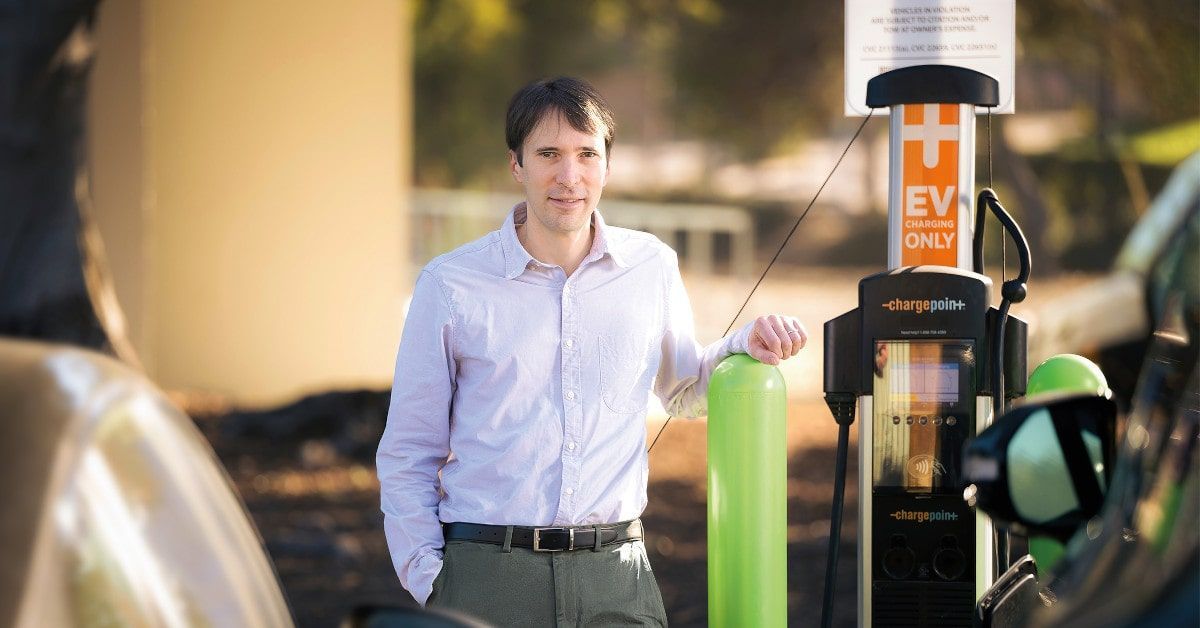Car Talk
Driving the most polluting cars off our roads — equitably.
Published Date
Story by:
Topics covered:
Share This:
Article Content
This story was published in the Spring 2023 issue of UC San Diego Magazine.
The world has 1.4 billion passenger vehicles. That’s not planes or trains, buses, trucks or even motorbikes. It’s automobiles. And while today’s gas-powered cars are cleaner than they were decades ago, they still produce a tremendous amount of air pollution. Will zero-emission electric vehicles save the day? “Maybe,” says UC San Diego environmental economist Mark Jacobsen, “but we’re years away from a fully electric fleet.”
Even if other states follow California’s lead by mandating that all new car sales are electric vehicles or plug-in electric hybrids by 2035, Jacobsen says, “It will take decades for vehicle electrification to fix the challenge of higher pollution levels from older used vehicles.”
Jacobsen and economist colleagues at UC Berkeley and the University of Pennsylvania carried out the first comprehensive study of air pollution exhaust standards. They considered what policies might be effective in getting older, gas-powered cars off the roads and, more importantly, how this can be done equitably when the oldest, most polluting vehicles are disproportionately owned by low-income households.
“The equity issues are severe,” Jacobsen says.
The team’s National Bureau of Economic Research working paper, now at The Quarterly Journal of Economics, shows that exhaust standards in the U.S. — the centerpiece of the nation’s five-decade-old Clean Air Act — have been successful at reducing pollution from new vehicles. Since standards began in 1967, emissions of air pollutants such as carbon monoxide, nitrogen oxides and volatile organic compounds have fallen by more than 99% per mile for new U.S. vehicles.
Yet, exhaust standards alone don’t encourage scrapping older vehicles and may even discourage it. As standards tighten, new cars become more expensive to build. When prices go up, drivers may hang on to their older cars, which pollute more as they age and their pollution-control systems deteriorate.
“It will take decades for vehicle electrification to fix the challenge of higher pollution levels from older used vehicles.”
One possible solution analyzed by the team is to reform vehicle registration fees so that older cars (rather than newer ones) become more expensive to register. Another is to create subsidies to incentivize scrappage. However, the researchers say that both approaches have problems — not least of which is to impose an unfair financial burden on low-income households, which are most likely to drive the more polluting vehicles.
Ultimately, Jacobsen believes the most effective and equitable approach may be to look to European examples of “green zones” or “low-emission zones” (LEZs), which are geographical areas that restrict the operation of high-pollution vehicles. These zones are often in dense urban areas where pollution poses the biggest health threat. Currently, there are over 300 LEZs in Europe, and the number continues to rise. So far, there are none in U.S. city centers, but Jacobsen thinks they’re on their way.
“Somebody’s going to go first and put a green zone in the U.S.,” he says. “And once it works and they see it actually cleaned up the air, I think a lot of places will follow.”
You May Also Like
UC San Diego is Strengthening U.S. Semiconductor Innovation and Workforce Development
Technology & EngineeringStay in the Know
Keep up with all the latest from UC San Diego. Subscribe to the newsletter today.





